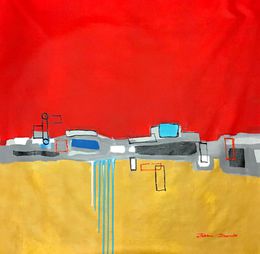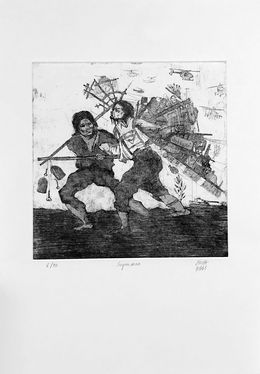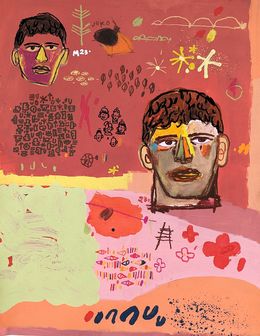
Welcome to the world of Laure D’Hauteville
Welcome to the world of Laure D’Hauteville: Championing Middle Eastern and North African art

Laure d'Hauteville, founder and director of MENART FAIR © irenederosan
Since the 1990s, Laure d'Hauteville has dedicated herself to building bridges between Western and Arab art scenes. Founder of numerous international art fairs (a total of 38) from Beirut to Singapore, Abu Dhabi, and Paris, she has provided unprecedented visibility to artists from the MENA region. Her commitment extends beyond event organization, as she has also supported young talents, created photography prizes and taught at Sorbonne University, sharing her expertise with new generations. Beyond her passion for the arts of these regions, her common thread is the promotion of intercultural dialogue between the Middle East and the West.
1. Hello Laure D'Hauteville! Could you introduce yourself to our audience?
I am an art advisor to collectors, institutions, galleries, and artists. Formerly a cultural journalist, I have been active since 1991 on the art scene between France and the Middle East. In 1998, I founded Artuel in Beirut, the first international modern & contemporary art fair in the region, which I led and curated until 2005. At the same time, I created Jabal, dedicated to recognizing and promoting emerging young artists in Lebanon.
In 2007 and 2008, I launched ArtParis Abu Dhabi in Abu Dhabi, United Arab Emirates, and in 2010, I founded and directed Beirut Art Fair, followed by Singapore Art Fair in 2014. From 2012 to 2018, I launched a prize in Lebanon for Lebanese photography, introducing many photographers to the international stage. In 2021, I conceived and developed MENART FAIR in Paris, the first fair dedicated to galleries representing artists from the Middle East & North Africa (MENA), which I have since expanded to other European capitals. At the same time, I am an independent exhibition curator in France and abroad, and a professor at Sorbonne University, specializing in MENA art scenes. Beyond my passion for the arts of these regions, my guiding principle is promoting intercultural dialogue between the Middle East and the West.
2. Can you give an overview of MENART FAIR and its mission, particularly for our international audience who may not be familiar with the event?
MENART FAIR is a “human-sized" boutique international modern and contemporary art fair that I founded in 2021. Its mission is to highlight artists from the Levant, the Arabian-Persian Gulf, and North Africa through a rigorous selection of leading galleries. Since its inception, MENART FAIR has been a true catalyst for a burgeoning art scene, whose rich and solid production is supported by numerous prestigious museums and institutions.
For its 5th edition, to be held from September 20 to 22, 2024, in the heart of Le Marais in Paris, MENART FAIR will focus exclusively on the female art scene of the MENA region, examining the legacy of pioneers and spotlighting contemporary and emerging women artists. This 100% female edition goes far beyond gender issues, aiming primarily to raise visitors' awareness of the richness and significance of this often-overlooked art scene in the West. The event will feature around thirty galleries, some focusing on design, as well as seven institutions. The exhibited artists come from countries whose works are rarely seen: Afghanistan, Algeria, Saudi Arabia, Egypt, Iran, Jordan, Kazakhstan, Lebanon, Morocco, Palestine, Qatar, Syria, Tunisia, the UAE, Yemen, Kuwait, and Uzbekistan.
The history of women artists in the MENA region is a moving artistic odyssey, marked by periods rich in creativity and innovation, but also significant social and cultural challenges, unknown to the general public. Female artists from the Arab and Persian worlds are often influenced by ancient artistic traditions such as Islamic, Chinese, Japanese, and Indian art. References to the past are revealed in symbolic motifs and the choice of ancestral themes such as nature, spirituality, or mythology. Techniques and mediums chosen by these artists also refer to tradition, with ink painting, calligraphy, and the use of natural pigments on silk or paper being common. In 2023, women artists from the Arab and Persian worlds represented only 1.5% of those featured in galleries! Thus, we decided to make this edition a committed one, so that, like cultural institutions that are multiplying initiatives for their recognition, the market can also become more active.
3. How did your career in the world of art fairs begin, and how has it evolved over time?
I created my first fair in Lebanon in 1998. This MENART FAIR edition will be my 38th fair. Having lived in Lebanon for almost 30 years, I have always wanted to defend the MENA region's artistic creation, which has become my expertise.
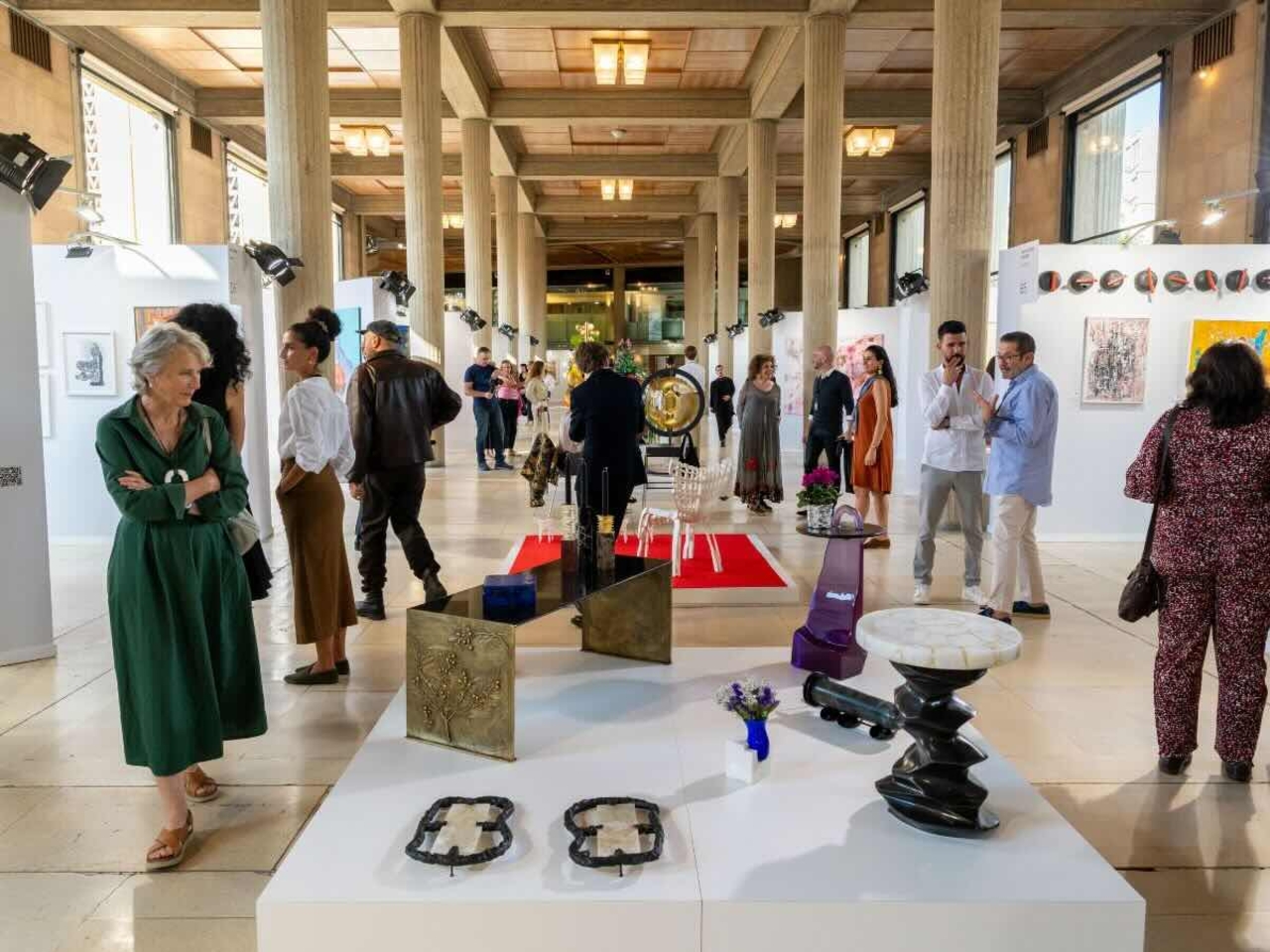
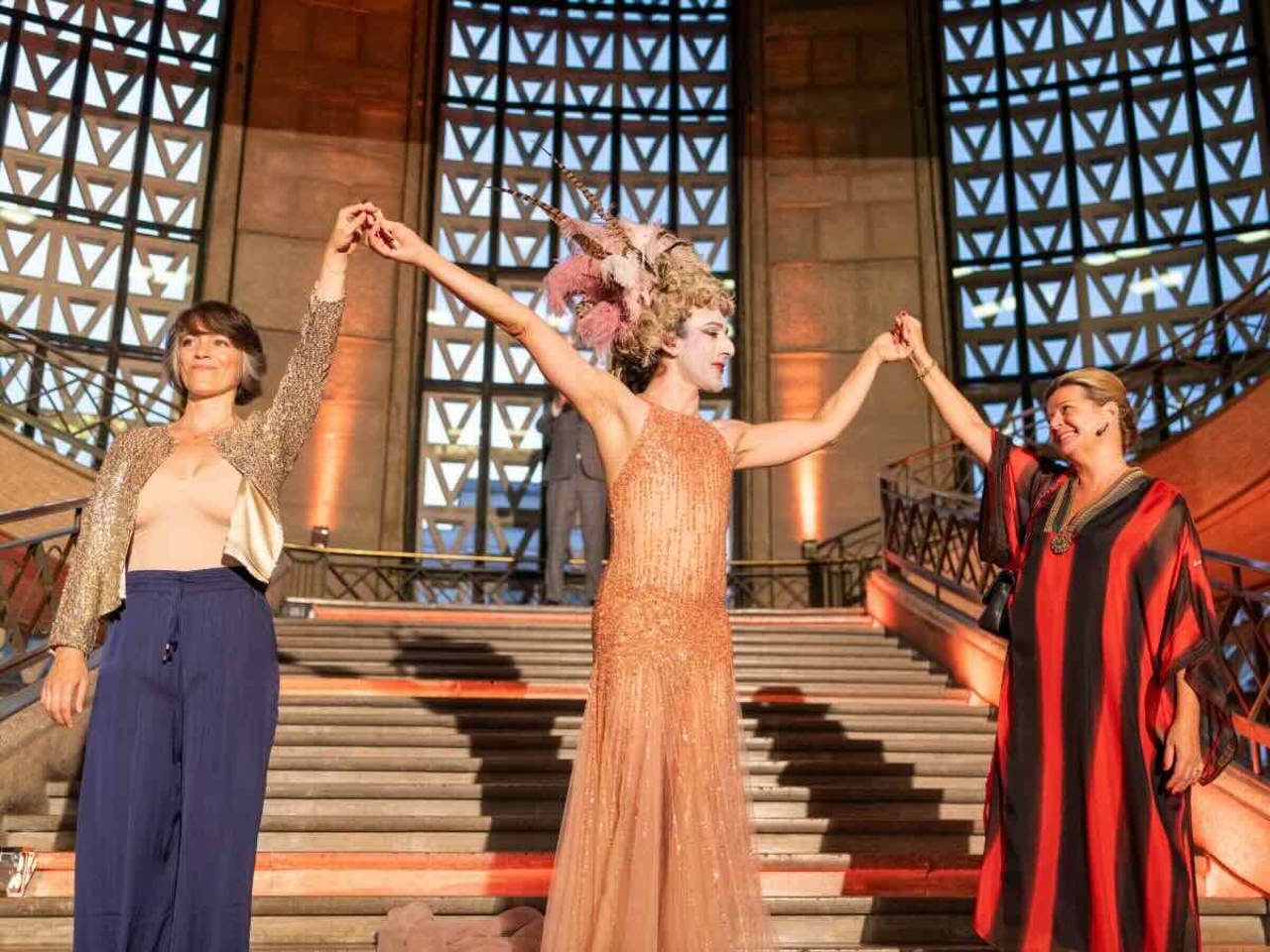
MENART FAIR © Ronan Nouri - The Social Medium
4. What has been the most memorable fair you've organized?
There are two: The first, in 2007, was ArtParis Abu Dhabi. Caroline Lacoste and Henri Jobbé-Duval, the owners of the ArtParis fair, contacted me because they wanted to expand their fair to the Gulf countries. I was the perfect person for that. It was an extraordinary adventure! ArtParis Abu Dhabi was held for two consecutive years at Emirates Palace, a seven-star, extraordinary hotel, costing around a thousand dollars per night. We received many visitors, just as the Sorbonne had opened its doors, and construction on Saadiyat Island, including the Louvre Abu Dhabi by Jean Nouvel, was beginning. Today, the fair is called Abu Dhabi Art Fair and is organized by the government. I go there every year; it's a beautiful fair.
The second was in 2019, the 10th edition of Beirut Art Fair. In five days, we received 36,000 visitors from all over the world. The fair's program, the conferences, the evening events in beautiful venues—everything was magical, and the galleries sold well! All the country's collectors “played the game" and opened their doors to VIPs. Then, three weeks later, the revolution broke out in Lebanon, followed by the August 4, 2020 explosion. Since then, the fair has been on “pause."
5. Do you have role models in the art world? If so, why do they inspire you?
In the world of fairs, I love Abu Dhabi Art Fair, Dubai Art Fair, 1.54 dedicated to African art, and Paris Internationale, which is very cool! Otherwise, I am a big fan of the Sharjah Biennial. I love their programming and how easily art is made accessible to everyone. These are “generous" events in terms of sharing ideas and receptions because art is life, and it's also about connections.
6. As an international online art sales platform, our audience is always interested in the commercial aspects of the art world. How does MENART FAIR contribute to the commercial aspects of contemporary art, such as gallery sales and the growth of the art market in the MENA region?
MENART FAIR is primarily an educational fair. It provides keys to understanding this market, which is increasingly interesting to collectors and institutions. We publish materials, communicate on our social networks with short, beautifully illustrated information, organize conferences, trips abroad to collectors' homes, open artists' studios, and collaborate with major auction houses to set benchmarks for these artists.
MENART FAIR is a human-scale fair that prioritizes artistic discovery, sharing, and fruitful exchanges between the public, galleries, and artists. By intentionally gathering a small and demanding selection, the fair offers a snapshot of the modern & contemporary scene from the MENA region, divided into four sections, allowing visitors to engage with high-quality curatorial offerings with international scope. The works of modern artists converse with promising contemporary ones. This unique encounter allows us to understand the evolution of art over the years and grasp the links that unite different generations.
The visibility of female Arab artists is increasing. We are witnessing a reassessment by many galleries that realize, despite underrepresentation, the remarkable quality of work from female artists in these regions. Several factors explain the current evolution: the talent and determination of these artists; changing social attitudes and increasing access to artistic education for women; the rise of feminist movements and the creation of support platforms dedicated to them; improved global communication through social networks, which has allowed them to connect with each other. The evolution of governments in Arab countries also supports their recognition and career development. For example, the Egyptian government has implemented art education programs for women and organizes exhibitions and festivals showcasing their work. Moroccan artists can benefit from grants provided by the Fine Arts Support Fund established by the government. The United Arab Emirates and, more recently, Saudi Arabia actively support female artists by providing them with numerous opportunities. As a result, 70% of artists from Gulf countries today are women!
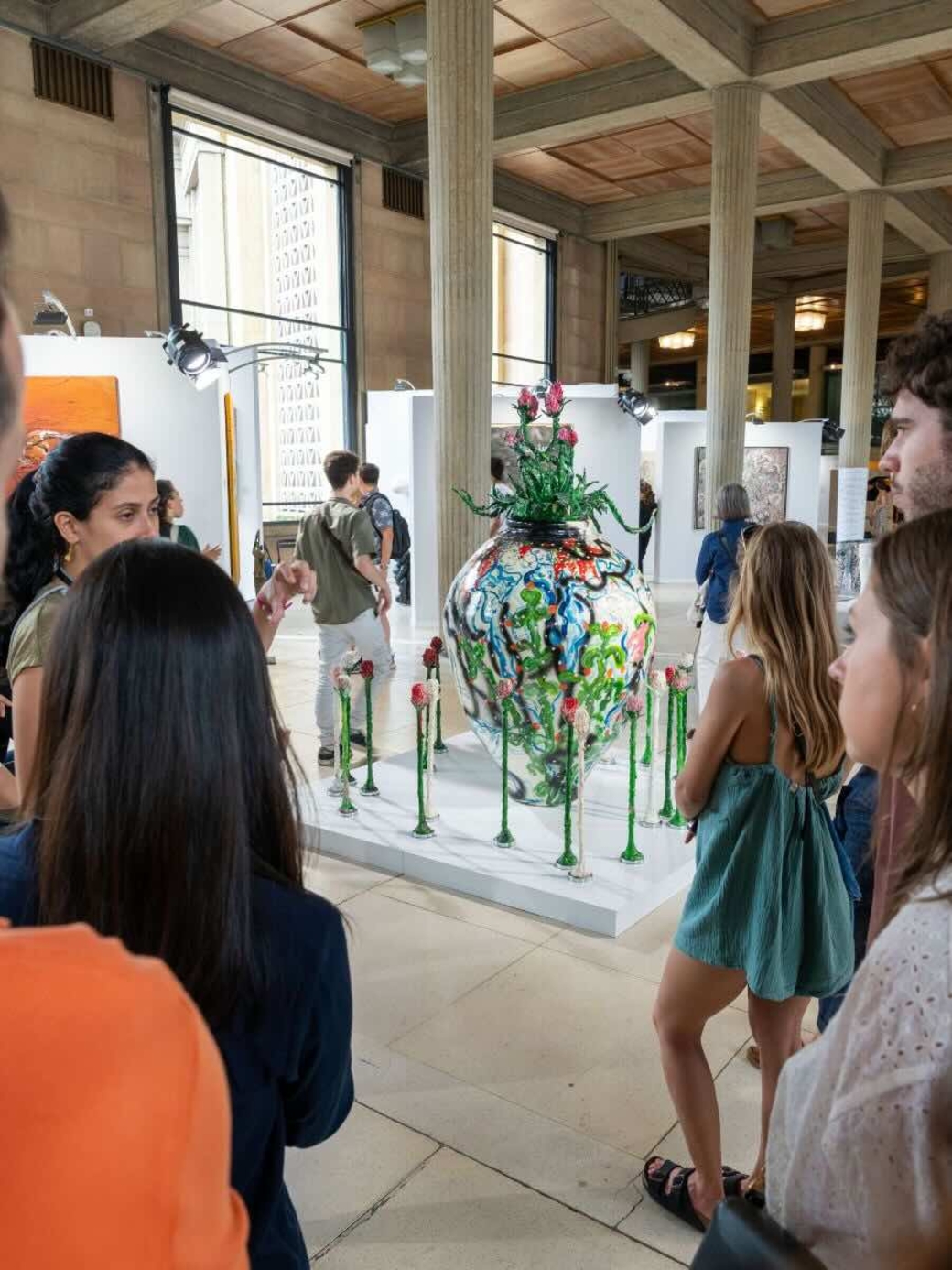
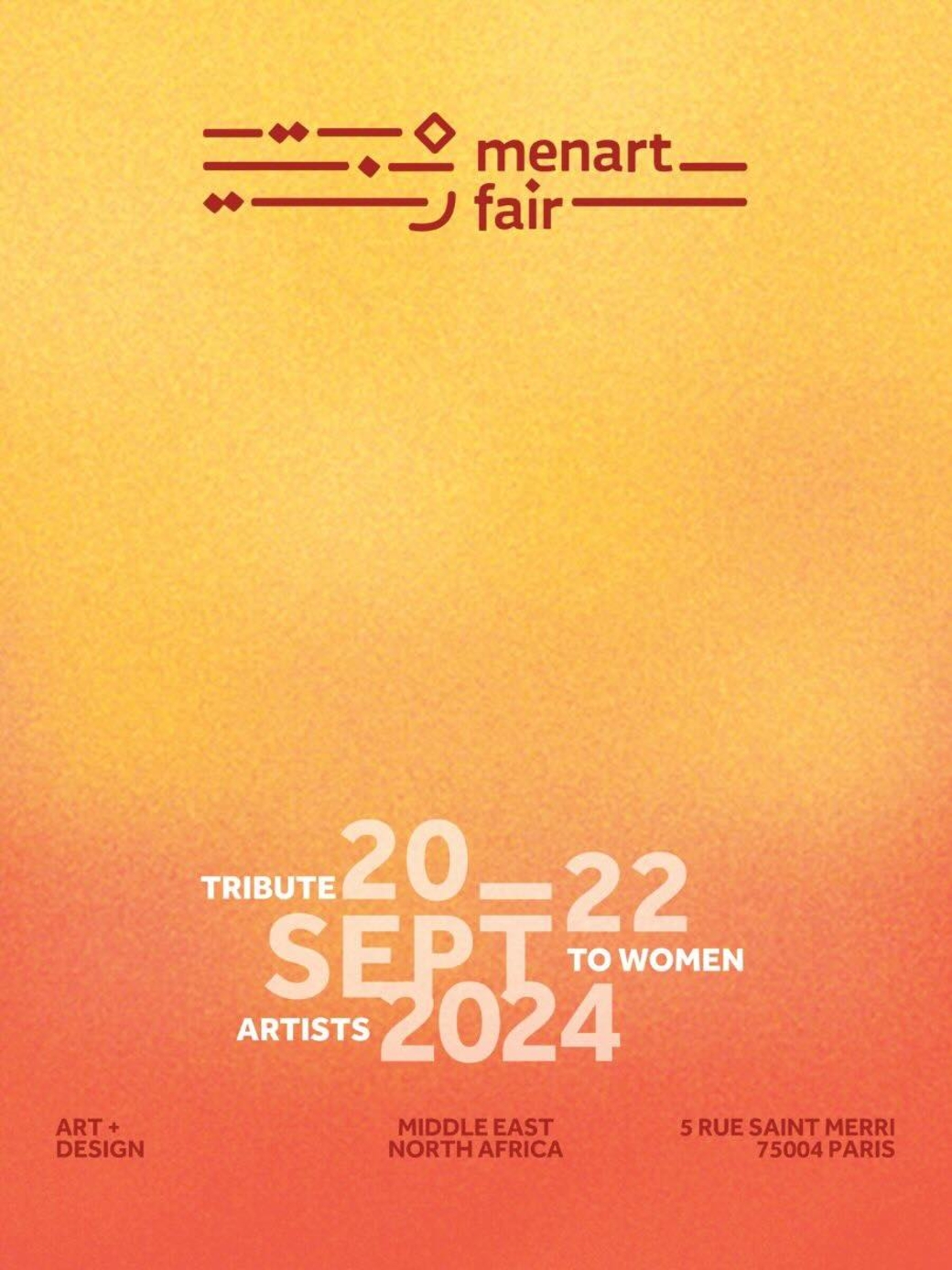
MENART FAIR © Ronan Nouri - The Social Medium
7. What unique experiences can participants expect from this event compared to a non-specialized art fair focusing on the Middle East and North Africa?
We take the time to engage with visitors by organizing guided tours with mediation (upon request). We introduce them to the galleries and the artists present, and we also arrange dance and music performances, as well as a culinary space featuring specialties from these regions. We love to celebrate and discuss art with joy. The advantage of our fair is its intimate scale, with the participation of international experts. By visiting MENART FAIR, attendees can gain a better understanding of the history and evolution of the peoples of these countries. It is, above all, an artistic journey through the Maghreb, the Middle East, and Central Asia. This year, you will discover the work of a hundred artists from Afghanistan to Uzbekistan, including Egypt, Iran, and North Africa!
8. Finally, what advice would you give to young people starting their careers in the art world and beyond?
The most important thing is to develop one's knowledge and discover one's passions. To do this, visit museums, exhibitions in galleries, art fairs in France, Europe, and if possible, outside of Europe, to develop a critical eye. Attend conferences, debates, and perhaps organize some with your university. Then, make small reports to learn how to analyze works and identify their characteristics. It would also be ideal to subscribe to and/or read art press to discover what interests you. Young people will soon realize their areas of interest (ancient art, modern & contemporary, figurative, abstract, or even engaged art).
It is also very important, from the start, to build a network (people they could meet in galleries, through friends, or friends of friends, on social networks, create a blog or a special page on social media, sharing information about what they liked, etc.). Perhaps also join art associations, such as MENART Friends or others, that help young people become familiar with art.
To start a collection, I would simply say: buy what you love and don't let yourself be influenced. It can begin with posters, postcards, then a small drawing, a small sculpture, a painting, etc. In auction houses or on websites, one can find treasures at very reasonable prices. It's important to research the artist's background. Over time, these young collectors will grow along with their “collection" and will then be part of the market.
Auswahl von Kunstwerken
